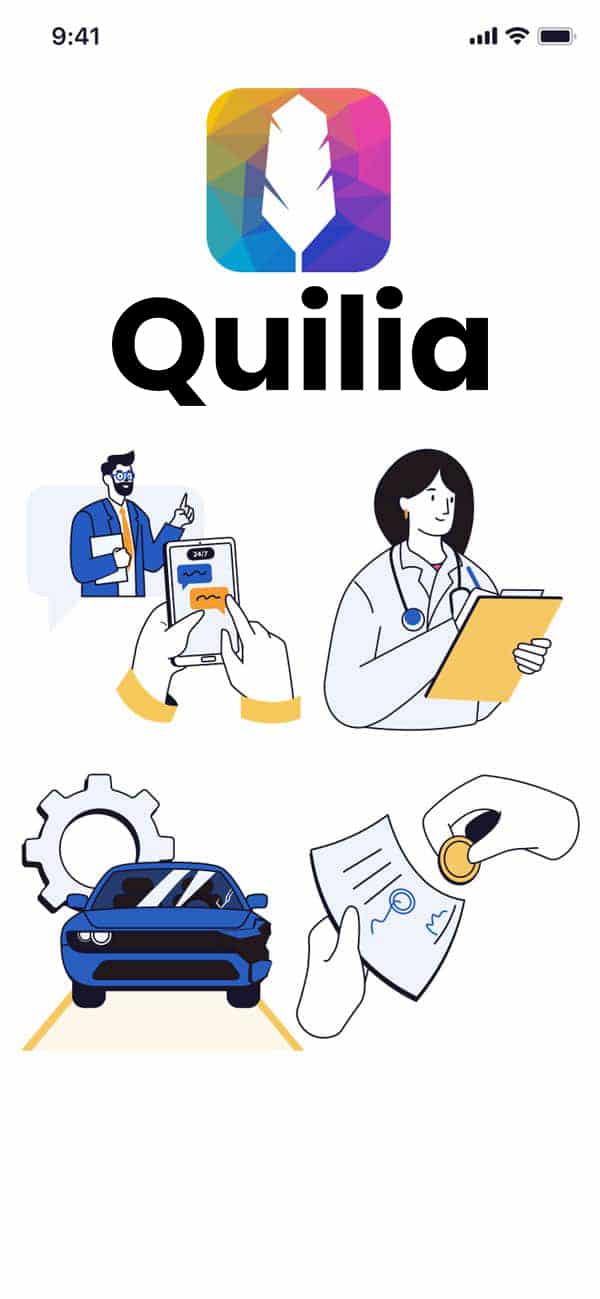
Running a personal injury law practice on your own is a constant balancing act. You’re not just handling legal strategy—you’re also managing intake calls, chasing down medical records, updating clients, prepping demands, and watching deadlines like a hawk. Every task falls on your plate, and every fire is yours to put out.
There’s no case manager to delegate to. No assistant to screen calls. No paralegal to handle the paperwork. It’s just you—and the weight of every active case.
The reality? Even the sharpest solo attorneys can get buried under the workload. And when that happens, things slip: client communication, treatment tracking, documentation quality, even settlement values. Not because you’re not good at what you do, but because you’re human.
That’s where technology steps in. Not to replace you, but to amplify you.
Think of it like Tony Stark. The guy wasn’t bitten by a radioactive spider—he just built the most efficient, high-powered suit on the planet. Smart tech gave him the edge.
If you’re flying solo in personal injury law, it’s time to build your suit.
Why Solo Personal Injury Practice Is So Demanding
Solo personal injury practice isn’t just law—it’s logistics, support, and survival. You’re expected to juggle everything, and most days it feels like you’re sprinting just to stay in place. Here’s what makes the role especially relentless:
Administrative Overload
Every case comes with a flood of documents: intake forms, medical records, treatment timelines, police reports, insurance paperwork. Add in the calls, emails, and follow-ups, and your actual legal work gets squeezed into whatever scraps of time are left over.
Client Communication Never Stops
Your clients are injured, anxious, and trying to make sense of a process they don’t understand. They want updates. Reassurance. Help navigating doctor appointments and property damage claims. You want to support them—but there’s only one of you, and only so many hours in the day.
The Real Legal Work Still Has to Happen
You still need time to analyze records, negotiate with adjusters, draft demands, and prep for litigation. This is the work that actually moves cases forward, but it often takes a backseat to the noise.
And let’s not forget medical records. Just getting them is a full-time job—chasing providers, following up, waiting on faxes that may never come. It’s a brutal time sink, especially when your attention should be on strategy, not status checks. Without a better system or outside help, record retrieval becomes the silent killer of your workday.
Treatment Tracking, Compliance, and Deadlines
Keeping tabs on treatment progress isn’t just nice to have—it’s essential for building case value. But without a reliable way to track it, missed appointments or inconsistent care can derail a case. On top of that, you’re responsible for HIPAA compliance, lien tracking, and every statute-related deadline.
Even the most tech-savvy solos end up stitching together tools that weren’t built for personal injury work. Maybe it’s a mix of Google Drive, a case management system with limited PI features, and some clever Zapier automations. It can feel functional—until you hit scale. Then the gaps show up: missed treatment updates, scattered client comms, demand packages missing key records. Not because you’re disorganized, but because the tools weren’t made for this kind of grind.
Iron Man Was Just a Guy (Until He Built the Suit)
Tony Stark didn’t get bitten by a radioactive bug or born on another planet. He was just a guy. A brilliant, overloaded guy who knew he couldn’t win every fight on grit alone—so he built a suit. Not to do the job for him, but to make him faster, sharper, and more capable under pressure.

Solo attorneys are in the same spot. You’ve got the brains, the legal skills, and the work ethic. But you’re still human. And the work is relentless. That’s where smart technology becomes your suit—not some AI overlord trying to take your job, but a force multiplier that amplifies what you already do best.
Need to send timely updates to every client without rewriting the same message 15 times a week? The suit handles that.
Want to know if a client missed treatment without waiting for them to call you in a panic three weeks later? The suit’s already watching.
Trying to prep a demand package and realize half the records are missing? The suit’s been collecting them in the background.
The tech doesn’t replace you—it just gives you the tools to operate at a higher level, without burning out. And in a solo practice, that edge isn’t optional. It’s survival.
The Core Functions of a Tech-Enabled Solo
The right tech doesn’t just help you keep up—it helps you punch above your weight. These are the areas where smart personal injury software gives solo attorneys the edge.
A. Client Communication that Scales
Your clients are anxious and want updates. But you can’t spend all day answering “any news?” texts. That’s where tech steps in.
- Set up automated updates triggered by case milestones
- Use message templates that still feel personal
- Let clients track their own progress in real time (without calling you)
Result? Fewer interruptions, happier clients, and no guilt about unanswered messages.
B. Case Progress & Treatment Tracking
Every missed appointment, every gap in care—it all chips away at the value of the case. But staying on top of treatment manually? It’s impossible at scale.
- Let clients log pain scores and appointments directly
- Automatically flag missed treatments so you can follow up
- Keep a real-time timeline of medical care without chasing it down
You stay proactive, not reactive. And that means stronger demands down the line.
C. Demand & Documentation Readiness
Preparing a demand package shouldn’t feel like starting from scratch every time. But when you’re juggling too much, it usually does.
- Gather records and client data over time, not in a last-minute rush
- Use structured prompts to collect relevant case facts early
- Keep all documentation centralized and easy to pull when it’s time
The tech keeps your demand packages clean, complete, and credible.
D. CMS Integrations that Actually Work
You don’t need more tabs or more tools—you need the tools you already use to talk to each other.
- Pull client-submitted data into your case management system automatically
- Sync key updates between systems (no double entry)
- Reduce the friction between front-end client experience and back-end ops
Whether you're on Clio, Filevine, MyCase, or something else, the best personal injury software for solo attorneys doesn’t replace it—it enhances it.
Recommended Tech Stack for Solo Personal Injury Attorneys
You don’t need 20 tools. You need the right 6—working together. Here’s a proven stack that covers the full journey from intake to discovery, with each tool playing a specific role:
- Website Chat: Juvo Leads — Engage potential clients instantly with live or AI-powered chat.
- Intake: Lead Docket — Keep new leads organized and flowing into your pipeline.
- Case Management: Filevine, Clio, MyCase, or CASEpeer — Each has its strengths, so pick the one that fits your workflow best.
- Client Management: Quilia — The only platform built specifically to manage and empower injury clients across the life of the case.
- Record Retrieval: Arctrieval Inc or Streamlined Record Retrieval — Outsource medical record collection so you can focus on the case, not the paper chase.
- Demand Prep: EvenUp — AI-generated demand letters that are clean, accurate, and ready to negotiate.
- Discovery Requests: EsquireTek — Speed up and simplify the process of answering discovery with automation.
Each one reduces friction. Together, they give you leverage.
Benefits Beyond Efficiency
Yes, good tech saves time. But the real upside? It shifts the way you run your entire practice. This isn’t just about working faster—it’s about working smarter, staying healthier, and building something that actually lasts.

Better Client Experience = Better Reviews and Referrals
When clients feel seen and informed, they trust the process—and they trust you. That trust leads to stronger relationships, smoother cases, and glowing reviews when it’s all over. Plus, happy clients refer. Stronger relationships and smoother cases start with clear updates and trust-building touchpoints. Here’s how client communication impacts your firm.
In solo practice, referrals are currency.
Lower Overhead Without Sacrificing Quality
Hiring staff is expensive. Training, managing, and retaining staff? Even more so. But when software takes over the routine, repeatable tasks, you can operate lean without feeling underpowered.
You don’t need a team when your systems work like one.
Data Completeness Leads to Stronger Settlements
Consistent treatment, accurate records, documented pain levels—all of it drives case value. When your software helps you collect that data as the case progresses, your demand letters write themselves, and your negotiations carry more weight.
You’re not just settling faster. You’re settling stronger.
Reduced Burnout = Longer Career Runway
Solo practice is rewarding, but it’s also relentless. Burnout isn’t just bad for your mental health—it’s bad for your clients, your reputation, and your long-term growth.
Technology that handles the noise lets you focus on what actually matters: being a damn good lawyer.
What to Look for in Personal Injury Software
Not all software is built with solo personal injury attorneys in mind. Many tools appear visually appealing but come with extra clicks, increased overhead, and more frustration. Here’s what actually matters when you’re picking tools that are supposed to lighten your load, not add to it. For a side-by-side comparison, check out our breakdown of popular personal injury case management software.
✅ Does it work with your current CMS?
Your case management system is your command center. The right software should plug into it cleanly—no extra tabs, no duplicate entry, no awkward workarounds. Look for tools with real CMS integrations, not vague promises or “coming soon” badges.
✅ Is it built for personal injury workflows?
General legal tools are insufficient to handle the nuances of personal injury cases. You need software that understands:
- Treatment timelines
- Pain tracking
- Insurance records
- Pre-lit vs. litigation phase handoffs
If it’s not tailored for PI, it’s not built for you.
✅ Does it empower clients without overcomplicating things?
You don’t need clients logging into a clunky portal and getting frustrated. You need a clean, mobile-first experience where they can:
- Upload docs
- Track appointments
- Enter treatment details
- Get updates without bugging you
If your software makes it easier for clients to participate in their own case, you’ll see the difference in case value—and your sanity.
✅ Does it let you stay focused on law, not logistics?
At the end of the day, great software fades into the background. It handles the busywork so you can spend more time doing what only you can do—strategy, advocacy, and legal work that actually moves the case forward.
If a tool isn’t saving you time or mental bandwidth, it’s not doing its job.
The Tech Isn’t the Hero—You Are
Technology isn’t here to take your place. It can’t replace your judgment. It doesn’t have your instincts. It won’t show up in court and argue a case. That’s all you.
But what it can do is take everything that clogs up your day—every follow-up, every record request, every repetitive update—and handle it quietly in the background.
With the right tools, you’re not just keeping your head above water anymore. You’re leading.
Picture this: you walk into a deposition, calm, organized, and completely prepared. Not because you worked through the night, but because your systems worked for you while you slept. That’s the energy Tony Stark had when he stepped into the suit. Not flashy. Just ready.
The tech is the armor. You’re still the force inside it.


